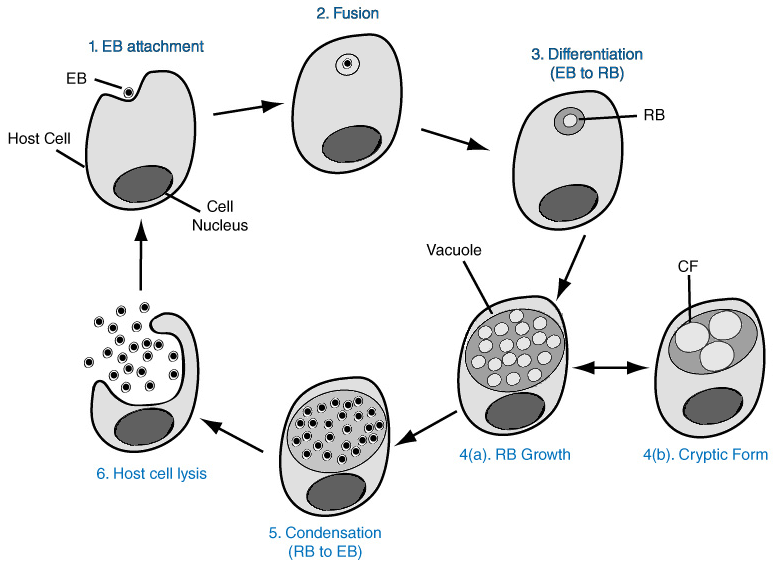- The Chlamydia have an unusual developmental cycle that involves two distinct forms: infectious elementary bodies and intracellular reticulate bodies. Elementary bodies attach and are internalized by susceptible host cells. Once inside, they reorganize into a replicative form (the reticulate body). Over a 24 hour period, these reticulate bodies divide and begin to reorganize back into elementary bodies. About 48-72 hours after infection, the cell is lysed and numerous infectious elementary bodies are released.
- The genome of Chlamydia is only 25% the size of E. coli, making it one of the smallest prokaryotes.
- The pathogenic mechanisms employed by Chlamydia are not well understood.
